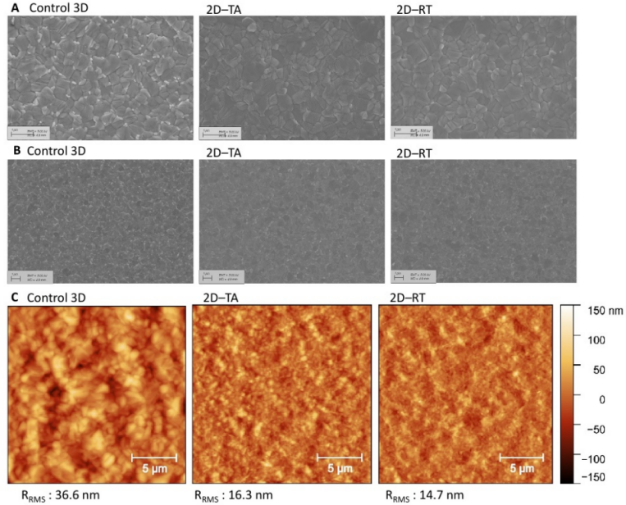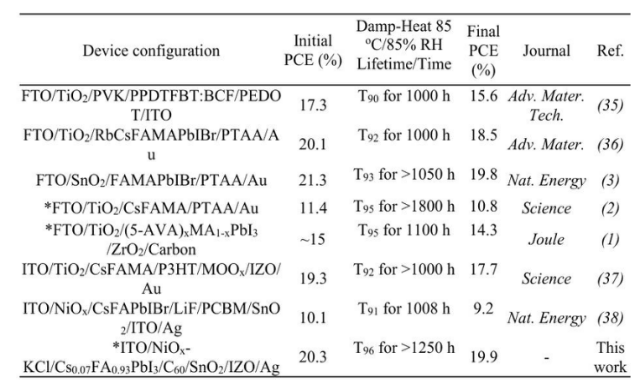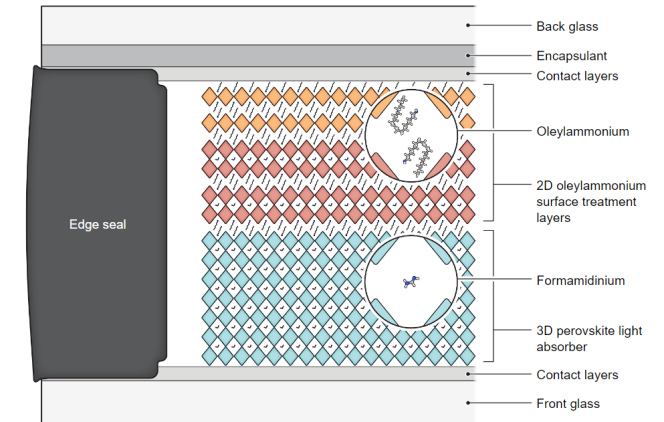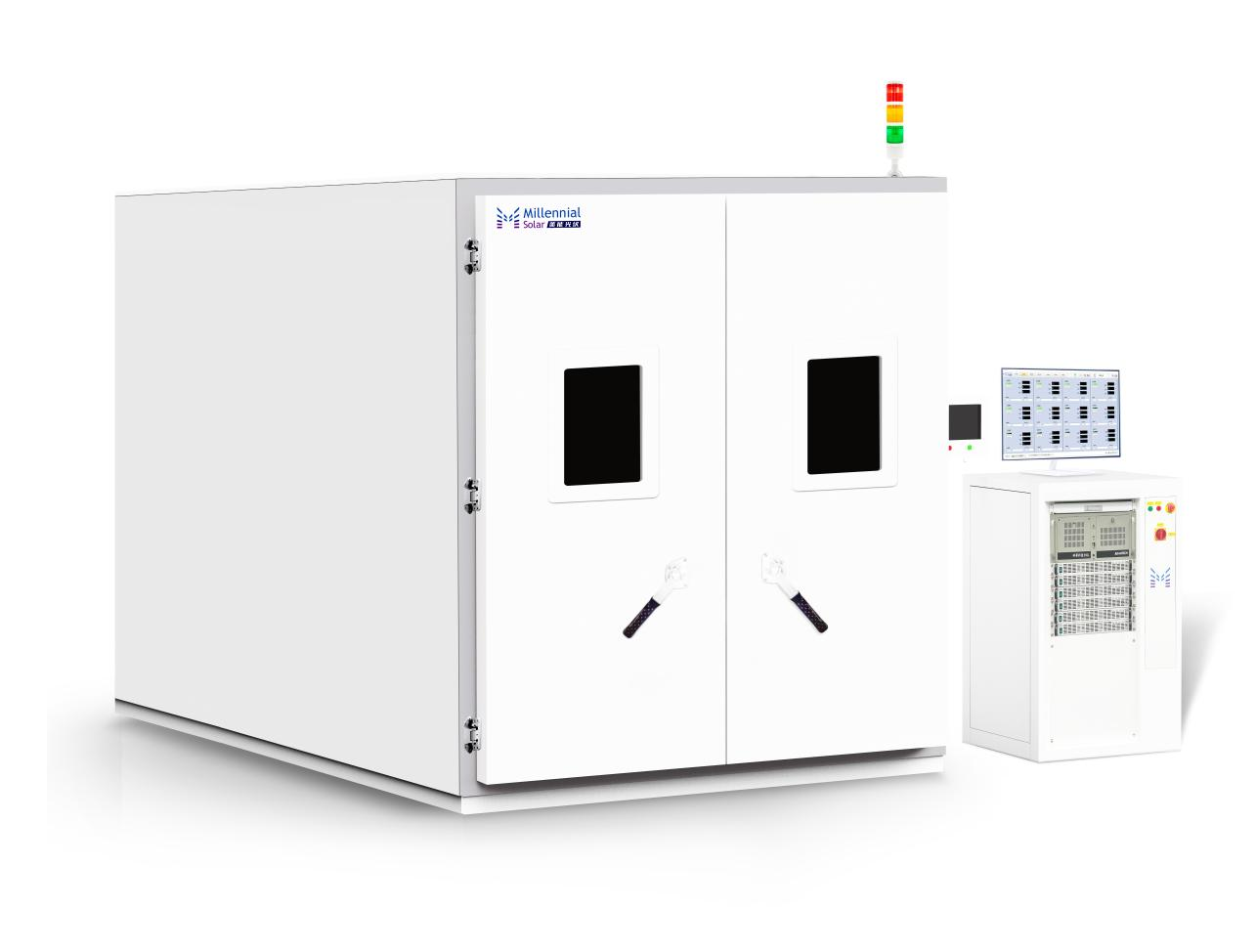Basic Characterization of Solar Cell
In-Line Four Point Probe Tester
Amorphous/microcrystalline Silicon Materials
Steady State Solar Simulator for Solar Cell
Analysis of Defects in Performance Test
Appearance Inspection Platform
Potential Induced Degradation Test
Reverse Current Overload Tester
Potential Induced Degradation (PID) Tester
Current Continuity Test System
Environment Induced Decay Aging Test
Hygrothermal Stability and Efficiency Optimization of Perovskite Solar Cells
Perovskite solar cells have attracted widespread attention in the photovoltaic industry due to their high efficiency and low cost, especially their stability in extreme high temperature and high humidity environments is a key challenge. To this end, the cell's environmental resistance is improved by researching innovative two-dimensional/three-dimensional structures and optimizing interface engineering and packaging technology. Damp Heat Test Chamber can operate continuously for more than 1,000 hours under conditions of 85°C and 85%RH, ensuring the stability of photovoltaic modules through high-temperature experiments. This issue of Millennial Solar will discuss the hygrothermal stability of perovskite solar cells.
Measures to improve the stability of perovskite solar cells under damp heat conditions

Morphological properties of two-dimensional perovskite films
The hygrothermal stability of the cell is improved by combining two-dimensional and three-dimensional perovskite structures. As a surface protective layer, the two-dimensional perovskite layer can effectively block moisture and oxygen and reduce the negative impact of these factors on the three-dimensional perovskite active layer. This two-dimensional layer is usually achieved by applying one or more layers of organic-inorganic hybrid materials, which have larger organic cations that form stable barriers, on top of the three-dimensional perovskite layer.

Morphological properties of perovskite films, top view SEM images of two-dimensional and non-two-dimensional perovskite passivation of perovskite films at different magnifications
Modification of the perovskite material itself to improve its chemical stability in high humidity and high temperature environments. This includes selecting more stable perovskite compositions, such as introducing ions with higher stability (such as cesium) to replace some of the unstable organic components. In addition, by controlling the defect density in the crystal structure and optimizing crystal growth conditions, the overall stability of the material can also be significantly improved.
Hygrothermal stability test

Cells that successfully passed the damp heat (IEC61215:2016) test lost less than 5% efficiency after >1000 hours
In the hygrothermal stability test, the researchers placed the encapsulated solar cells in an environmental test chamber under constant temperature and humidity conditions (85°C/85% RH) for more than 1,000 hours. After the device has cooled for approximately 30 minutes, periodic measurements are taken on the encapsulated device using a nitrogen-filled glove box. In subsequent tests, the researchers sequentially deposited a tin tetroxide layer about 10 nanometers thick and an indium zinc oxide layer 80 nanometers thick on C60 to replace the BCP layer. In operational stability tests conducted under standard AM1.5 irradiation (100 mW/cm²) and an ambient temperature of approximately 40°C, the power output was continuously monitored via maximum power point tracking (MPPT), which automatically adjusted the voltage. Detailed data analysis shows that despite long-term exposure to extreme environments, cell performance degradation is very limited, with an efficiency loss of no more than 5%. This result not only demonstrates the effectiveness of the materials and processes employed in enhancing the hygrothermal stability of perovskite solar cells, but also points to the potential of perovskite cells to address environmental challenges in commercial applications.
Perovskite solar cells can absorb heat

Perovskite module structure
According to the study, the thermal stability of perovskite cells was improved by treating the film with a solution of ammonium iodide [(C18H35)NH3 ] and modifying the heat treatment during the manufacturing process to change the surface structure of the perovskite crystals. (see picture). This treatment creates a layered surface structure that results in passivation of each microscopic perovskite particle. Passivation refers to the elimination of end-binding species that can become electron defects. This transformation has been shown to improve various aspects of performance and stability. Tandem perovskite materials are at the forefront of materials science research, including solar panels, semiconductors and more. Microscopically, Tandem perovskites are composed of alternating lead halide octahedra and self-assembling molecules that are typically too large to form a three-dimensional perovskite lattice. The layers can form a variety of crystal structures, depending on how the octahedrons of one layer are arranged with those of adjacent layers.
At the end of the experiment, it was repeatedly verified that the perovskite solar cell with 24% efficiency remained stable under humid heat testing and the film without annealing was repeatable in the perovskite process.
Damp Heat Test Chamber

E-mail: market@millennialsolar.com
Solar modules will withstand various harsh weather tests during their application. Among them, the performance of modules such as their ability to withstand high temperatures, high humidity, and long-term moisture penetration needs to be evaluated. Hot and humid environment simulation tests are used to verify and evaluate the reliability of components or materials and to identify manufacturing defects early through thermal fatigue-induced failure modes.
Meet standards: IEC61215-MQT13; IEC61730-MST53
•Continuous operation for more than 1,000 hours at 85°C and 85%RH requires ultra-high stability, both in terms of manufacturing process and reliability of electronic equipment.
•Built-in circulating air duct and long-axis ventilator for effective heat exchange, making the temperature inside the environmental box uniform and stable
•Adopt imported temperature controller to realize multi-stage temperature programming with high precision and good reliability
•Can operate in continuous high temperature and high humidity environment, and can also conduct high and low temperature interactive tests according to the engineering staff's plan
•With Potential Induced Degradation Tester, you can more intuitively observe the performance of photovoltaic modules
This article provides an in-depth discussion of the stability and performance of perovskite solar cells under extreme hot and humid conditions, with particular emphasis on significantly improving environmental tolerance through innovative 2D/3D structures, interface engineering optimization, and improvements in packaging technology.
Want to know more? Please contact us.
For more information about these stories or the Millennial Group, please contact us.
Fast Delivery & Comprehensive Support
Provide customers with comprehensive support from product to production line operation through on-site operation guidance and after-sales technical support.
Name *
Company
Title
E-mail *
Phone number *
City *
Country
Please select a product category
I am interested in receiving information about *
My message